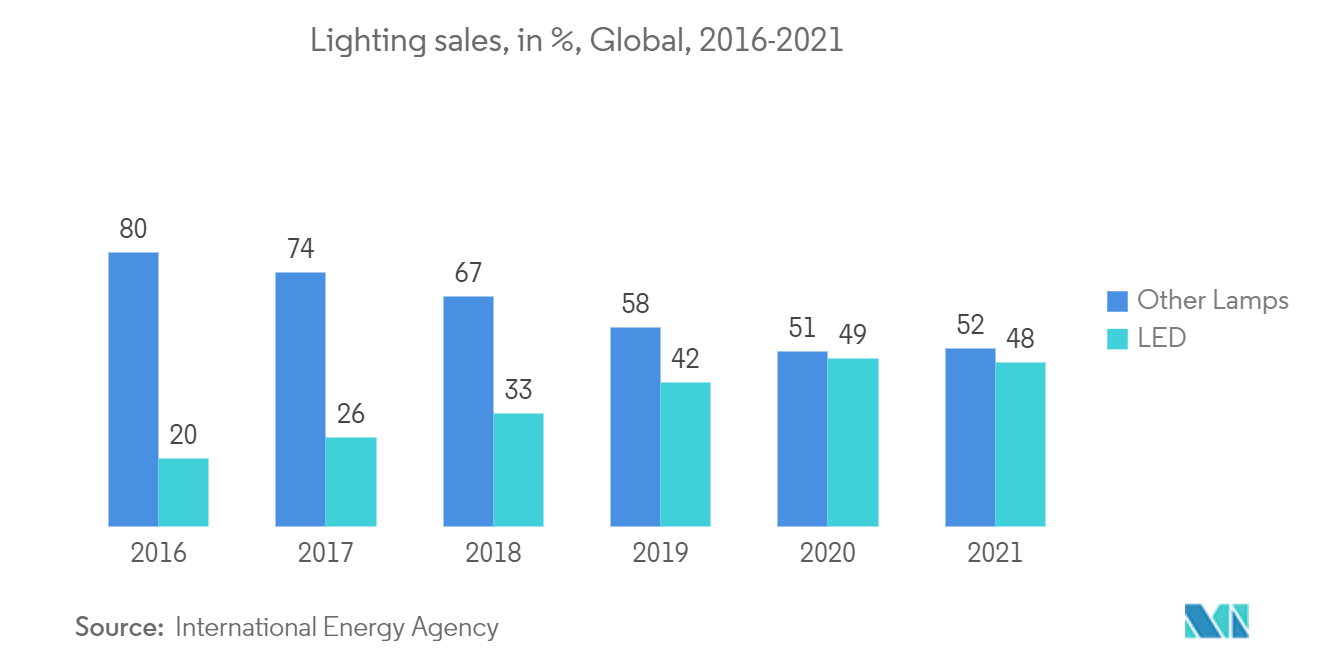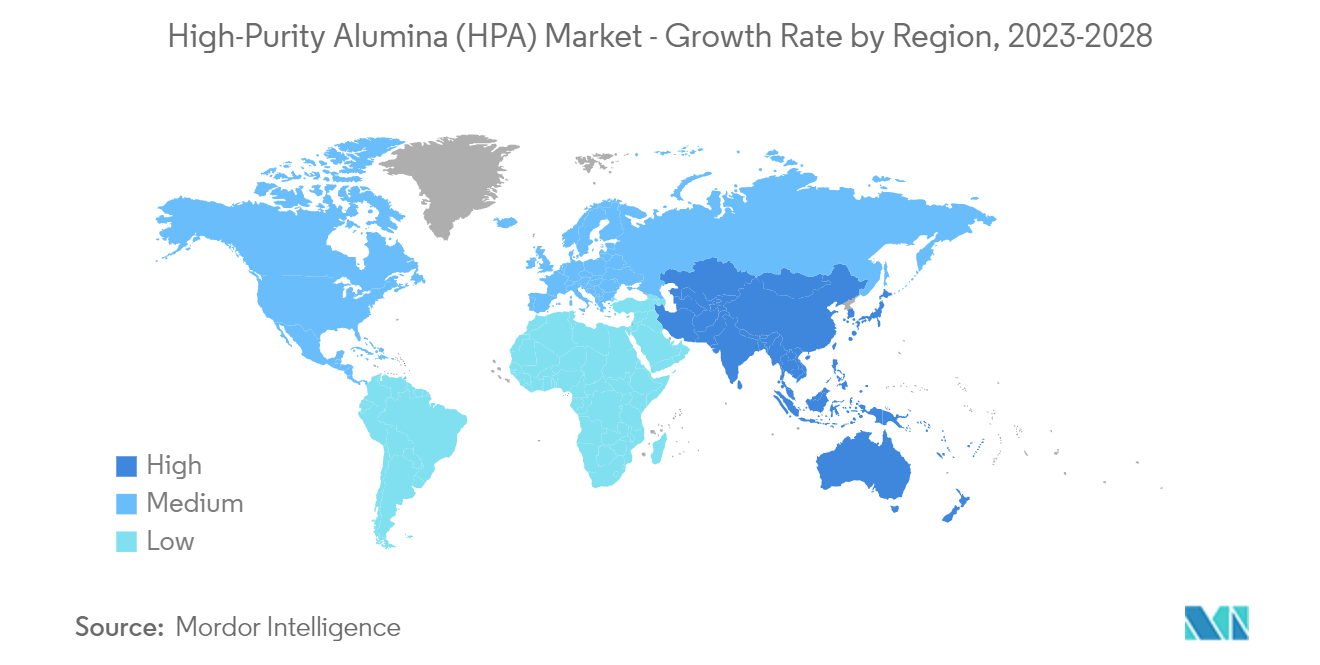Market Trends of High-Purity Alumina (HPA) Industry
This section covers the major market trends shaping the High Purity Alumina (HPA) Market according to our research experts:
Increasing Demand for LED Based Lightings
- One of the significant applications of High-Purity Alumina (HPA) is in producing synthetic sapphire, which is used as a substrate in LED preparation.
- Production of synthetic sapphire starts with a seed sapphire crystal, a mixture of high-purity alumina, and un-crystallized sapphire material (crackle), which are heated in a crucible. Currently, sapphire is the most preferred substrate in LED manufacturing, as it is much cheaper than other substrates, such as Silicon Carbide and Gallium Nitride.
- Currently, more than 50% of global HPA production is used in LED manufacturing. However, the increasing demand for LED lighting is expected to drive the market further, as studied during the forecast period.
- Some key factors driving the LED market are growing environmental awareness of the public and increasing demand for intelligent illumination. In the electronics industry, synthetic sapphire produced from HPA is also used in manufacturing semiconductor wafers. These silicon-on-sapphire semiconductors are used in radio frequency integrated circuits.
- According to the International Energy Agency, the global sales of LED have increased substantially in recent years, rising from a market share of around 5% in 2013 to more than half of global lighting sales in 2021, with integrated LED luminaires making up an increasing share. Several developed markets, including the United States and Europe, are responsible for the rapid expansion of the luminaire market segment. At the same time, China established a substantial domestic and worldwide manufacturing base.
- According to the US Energy Information Administration, United States households are increasingly switching to light-emitting diode (LED) bulbs. 47% reported using LEDs for most or all of their indoor lighting in 2021. In 2015, only 4% of households used LEDs for most or all of their indoor lighting.
- The US Department of Energy predicts that LEDs will gain market share in the residential sector during the next twenty years. Despite only holding 33% now, it is expected to increase to 56% in 2025 and 92% in 2035.
- Considering all the above facts and factors, the usage and demand of High-Purity Alumina (HPA) for LED-based lighting applications are expected to grow in the forecast period.

Asia-Pacific to Dominate the Market
- Asia-Pacific dominated and is further expected to dominate through the forecast period. With the accelerating usage of LED-based lighting and increasing application in Li-ion batteries in countries such as China, India, and South Korea, the consumption of high-purity alumina (HPA) is growing in the region.
- China emerged as one of the leading producers and consumers of lighting products globally. Some of the lighting products commonly used in China include light-emitting diodes (LEDs), electrodeless discharge lamps (EDLs), compact fluorescent lamps (CFLs), and organic light-emitting diodes (OLEDs).
- Furthermore, the country is focusing on the promotion of electric vehicles. According to figures released by the China Passenger Car Association (CPCA), it will likely augment the demand for lithium-ion batteries shortly. In China, around 3.3 million New Energy Vehicles, meaning battery-electric cars and plug-in hybrids, were sold in 2021. Of these 505,000 New Energy Vehicles, 423,000 were BEVs, and 82,000 were PHEVs. In December 2021, 505,000 NEV were sold.
- The electric vehicle sales in Australia reached 8,688 units in the first half of 2021. The country is expected to have nearly 58 electric vehicle models by the end of 2022.
- According to Semiconductors Industry Association (SIA), the semiconductor industry in Japan accounted for around USD 41.09 billion in 2021.
- To make LED manufacturing in India globally competitive, the Government of India approved a Production Linked Incentive Scheme for White Goods with a budgetary outlay of INR 6,238 crore (~USD 855 million), which includes LED Lights. The scheme will encourage manufacturing components or sub-assemblies not manufactured in India presently with sufficient capacity at an incentive rate of 4-6%.
- India's PLI scheme for lithium-ion battery manufacturing, the government introduced a production-linked incentive (PLI) scheme worth INR 18,000 crore (~USD 2175.66 million) for EV manufacturers to manufacture, export, and store lithium-ion cells.
- All factors above are likely to fuel the growth of the high-purity alumina (HPA) market in Asia-Pacific over the forecasted time frame.

